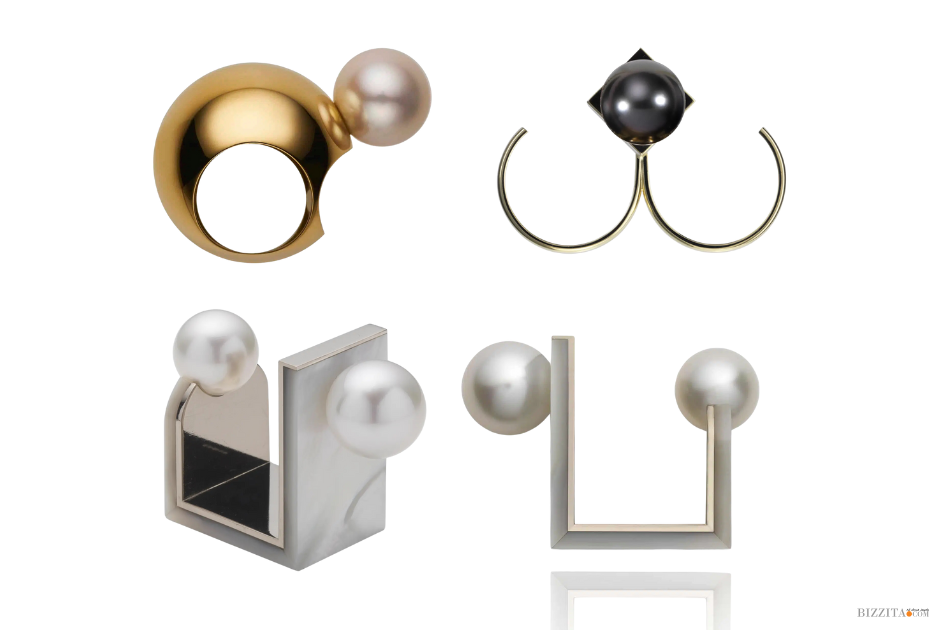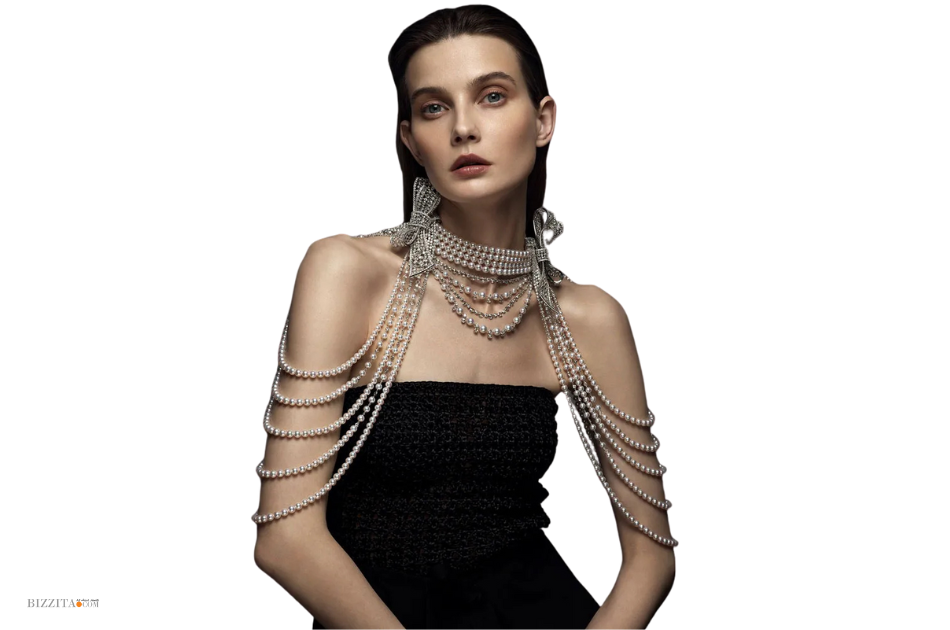Why Pearls? The Surprising Stories Behind the Trend You Can’t Ignore
As we move into 2025, one of the most captivating jewelry trends taking the spotlight is pearls. No longer confined to the realm of classic heirlooms, pearls are emerging as the must-have accessory, gracing runways, red carpets, and even street style with a fresh, bold appeal. This year, pearls are more than a fashion statement—they are symbols of timeless beauty, cultural heritage, and a touch of luxury that resonates with everyone from Hollywood icons to fashion enthusiasts.
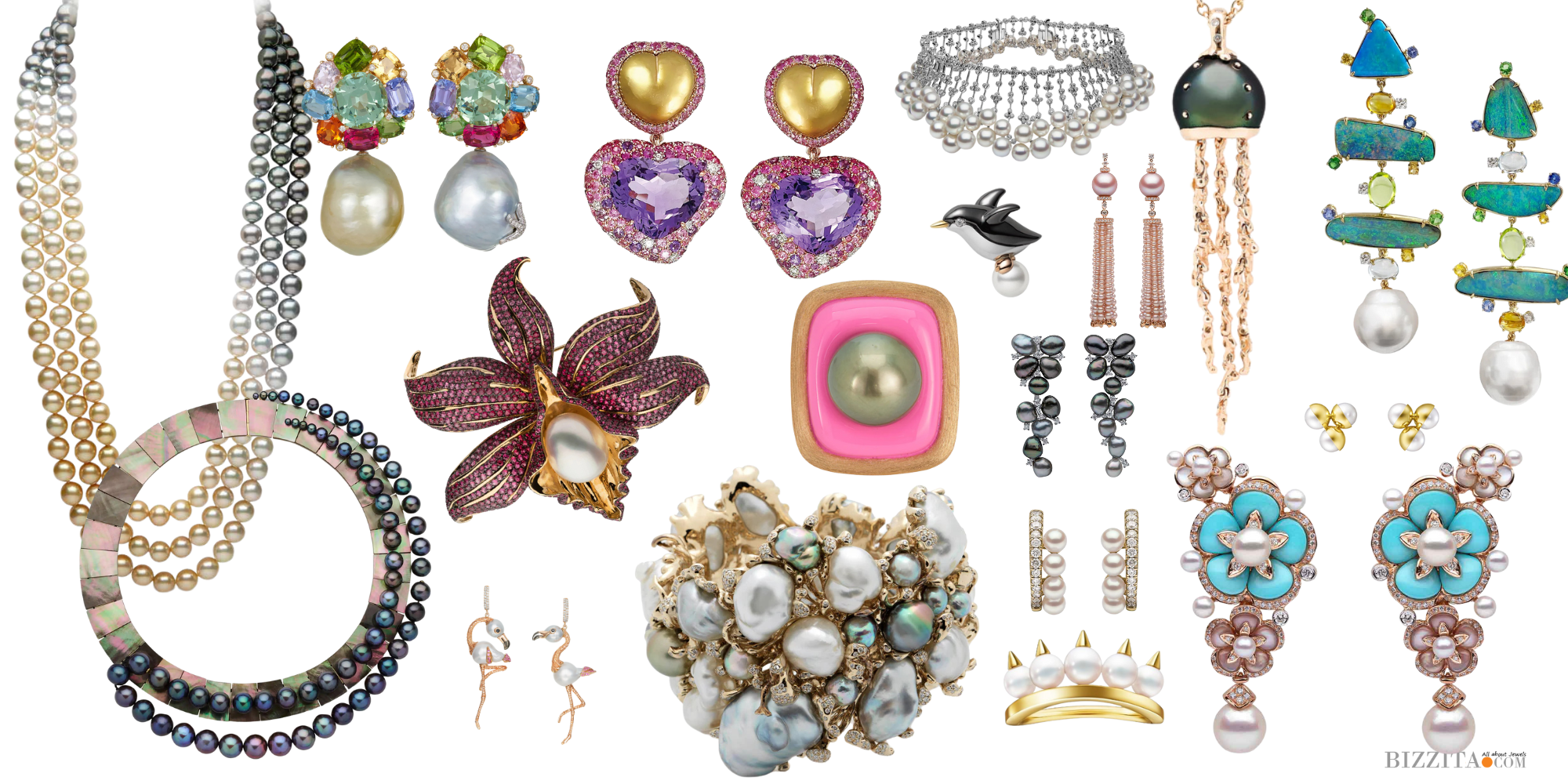
As we step into 2025, pearls are taking the fashion world by storm, transforming from classic heirlooms to modern-day icons of style and individuality. This year, pearls were everywhere—from the red carpet to streetwear, embraced by everyone from celebrities to style-savvy individuals seeking a touch of elegance with an edge. Far from the traditional strings your grandmother wore, today’s pearls symbolize bold self-expression, capturing the attention of jewelry lovers, trendsetters, and designers alike. Here’s why pearls are the ultimate accessory for 2025 and everything you need to know to embrace this trend confidently.
Tip: If you are a jewelry retailer and want some inspirational guidance on buying pearls or pearl brand jewelry for your jewelry store, scroll down ↓ to this paragraph: ↓ Pearl Jewelry Buying Guide for Every Market Segment: Mid-Level to Ultra-Luxury Stores ↓
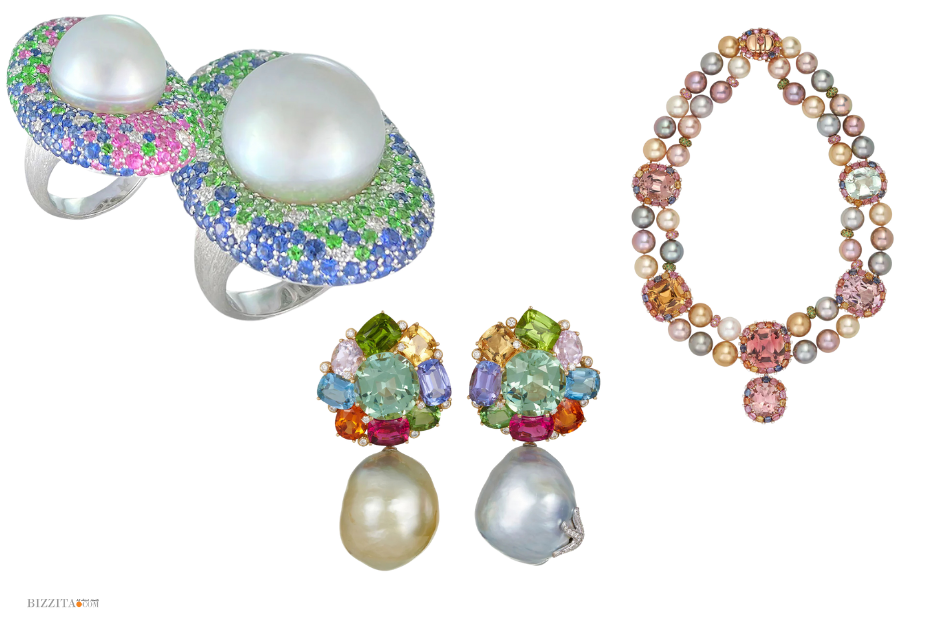
Margot McKinney
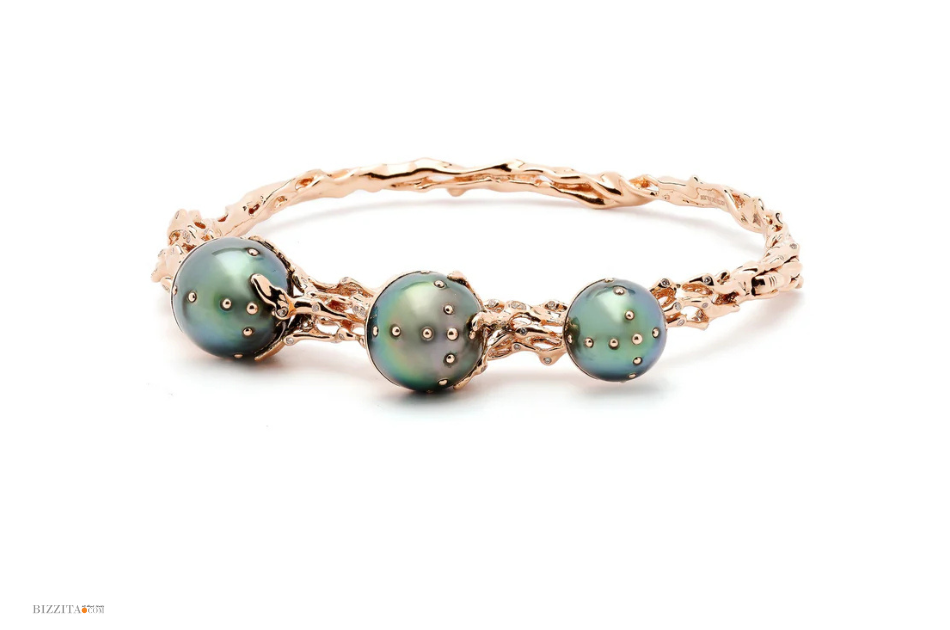
Bibi van der Velden
The Revival of Pearls in Modern Style
The Appeal of Pearls: Why They’re Making a Comeback
Pearls have re-emerged in the spotlight, embraced by celebrities, designers, and tastemakers across cultures and generations. Fashion icons like Rihanna, Harry Styles, and A$AP Rocky have been spotted donning pearls, blending their traditional elegance with modern style. Even in hip-hop, where gold chains once dominated, pearls are now seen as a fresh, refined accessory, highlighting individuality and sophistication.
Celebrities are not alone in reclaiming pearls. Designers have leaned into this timeless gem, creating pieces that transcend tradition and speak to a new generation of wearers. This shift reflects a broader trend: embracing personal style over conformity, with pearls acting as the perfect medium.
"Pearls have always carried the elegance of history and the power of symbolism," says designer Zeemou Zeng, "but today, they’ve become a statement of individuality and sophistication."
Like most long-term trends in jewelry, the revival of pearl jewelry has been on the rise for several years. It's fun to observe how slowly these trends develop. They are much more sustainable than the quick-one-season-hot trends typically are. This allows the public to slowly get accustomed to seeing pearls popping up in their favorite Netflix show or on celebrities, influencers, and other media personalities. Once they start to see them off-screen, on people they meet, and in the jewelry stores they pass, presented in a classical or edgy manner, the gap between early adopters, first-wave adopters, and mainstream closes. We are in the wave of early adopters, meaning mainstream or mass adopters are in sight now!
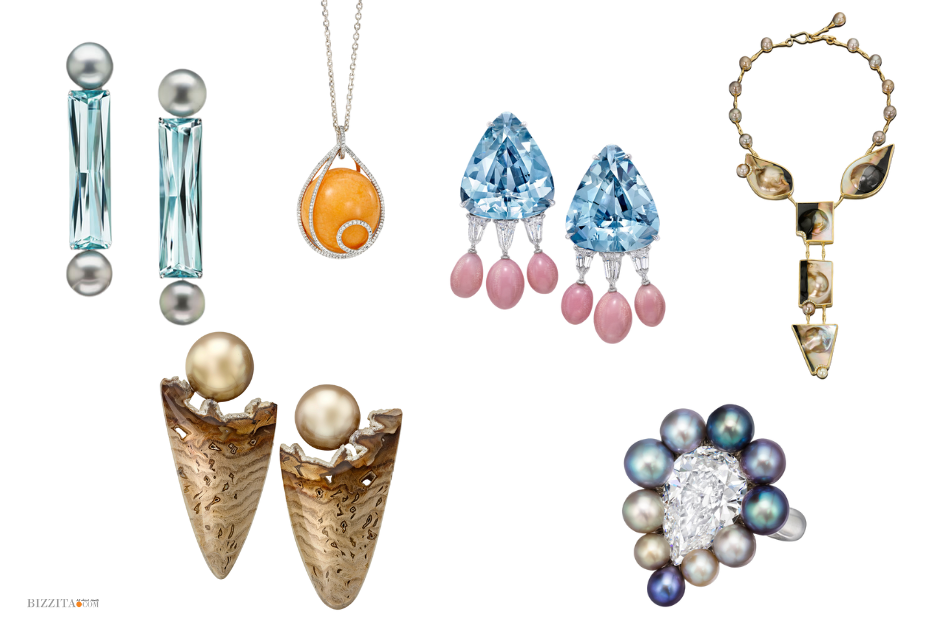
Assael
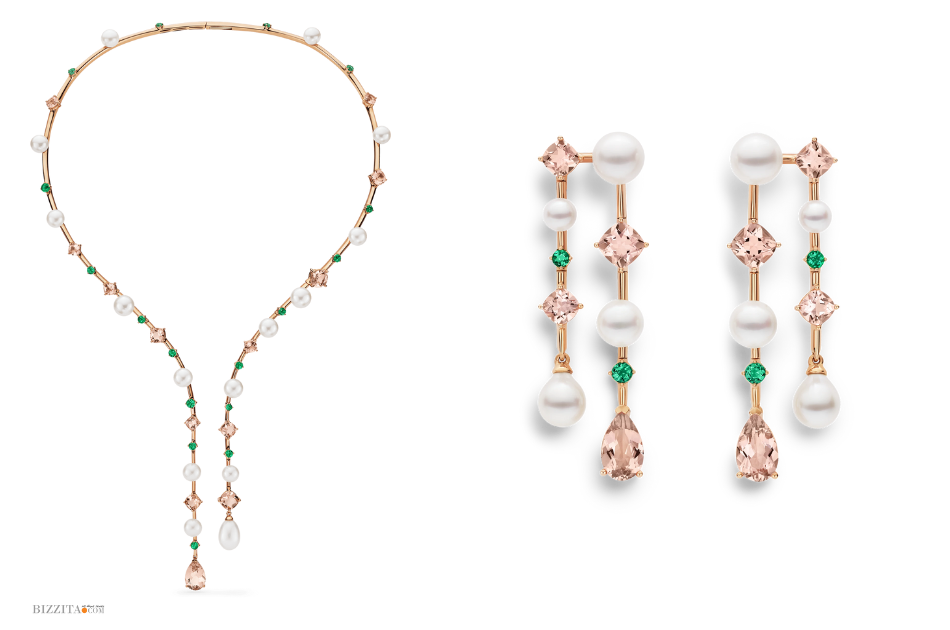
Bucherer
Pearls Throughout History: Symbols of Power and Elegance
Iconic Figures Associated with Pearls
Throughout history, men (yes, men!) and women have worn pearls as symbols of power, wealth, and elegance. Here are some prominent figures associated with pearls:
- Queen Elizabeth I of England (1533–1603) – Known for her elaborate style, Queen Elizabeth I wore pearls extensively, symbolizing purity, wisdom, and royalty. In portraits, she is often depicted adorned with layers of pearls, reinforcing her authority and divine right to rule.
- Jahangir, Mughal Emperor of India (1569–1627) – The Mughal emperors were known for their opulent attire, and Jahangir was frequently depicted wearing strands of pearls. In Mughal culture, pearls symbolized power and divine favor, and rulers adorned themselves with pearls to reflect their prestige.
- King Henry VIII of England (1491–1547) – As a sign of wealth and stature, Henry VIII often wore pearls and other precious gemstones in his clothing and accessories. His portraits showcase pearls sewn into his garments and displayed in his hats.
- Empress Catherine the Great of Russia (1729–1796) – Catherine the Great famously wore pearls to convey both power and sophistication. Her collection included pearls of extraordinary size and quality, which she displayed in earrings, necklaces, and elaborate headpieces.
- Louis XIV of France (1638–1715) – Known as the “Sun King,” Louis XIV was a fashion icon of his time. He incorporated pearls into his wardrobe, particularly in his accessories, demonstrating the gem’s appeal among European male nobility.
- Coco Chanel (1883–1971) – The iconic fashion designer revolutionized pearls as a modern women’s fashion staple. She famously layered ropes of pearls, declaring, “A woman needs ropes and ropes of pearls.” Chanel’s influence made pearls accessible and fashionable beyond royal or aristocratic circles.
- Grace Kelly, Princess of Monaco (1929–1982)—Known for her elegant style, Grace Kelly often wore pearls in her public and private life. Her classic, understated approach to pearl jewelry cemented pearls as the epitome of refined grace and sophistication.
- Maharaja Bhupinder Singh of Patiala (1891–1938)—This Indian maharaja was famous for his extravagant jewelry collection, including multiple strands of pearls layered in his royal attire, symbolizing wealth and nobility.
- Elizabeth Taylor (1932–2011) – Known for her love of jewelry, Elizabeth Taylor owned an impressive collection of pearls, including the La Peregrina Pearl, one of the most famous pearls in history. Taylor’s collection highlighted pearls as ultimate expressions of luxury and beauty.
- Yoshiko Kawashima (1907–1948) – A Chinese princess and Japanese spy, Kawashima wore pearls as part of her daring fashion choices, blending Eastern and Western influences. She used pearls for elegance and to convey confidence and command attention in both societies.
These figures reflect how pearls have transcended gender and culture, carrying deep symbolism and prestige through the ages.
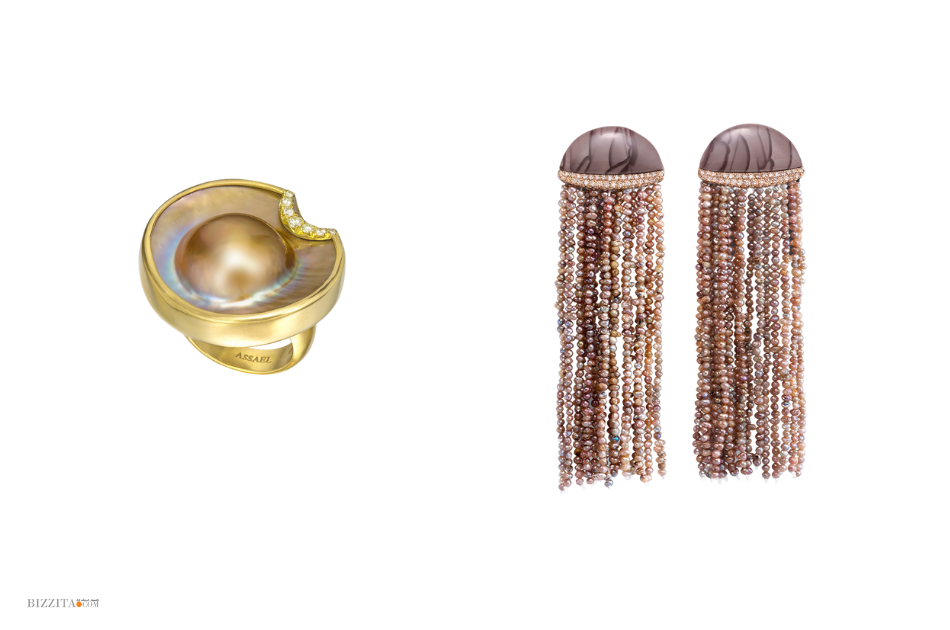
Assael
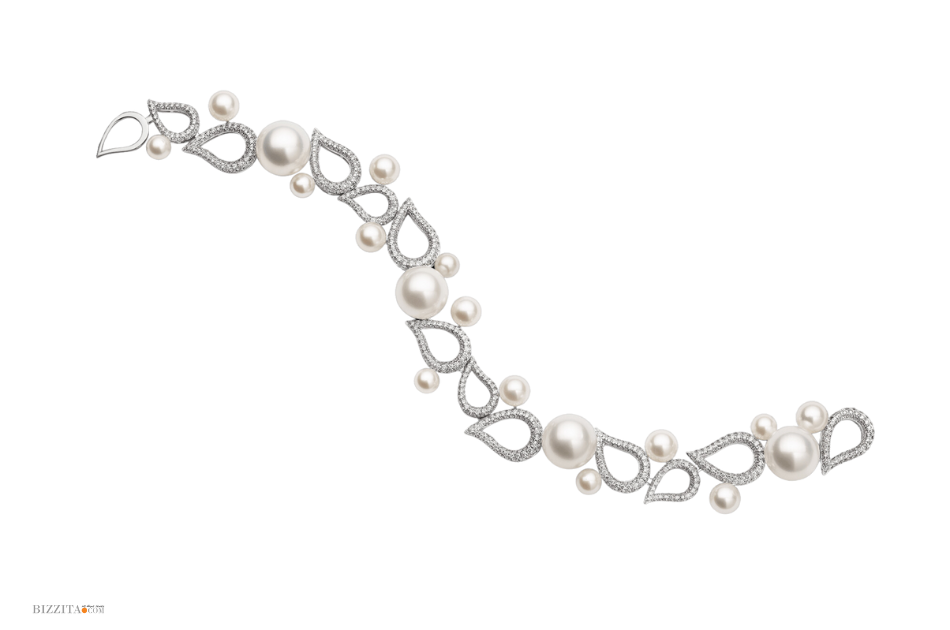
Bucherer
The Symbolism of Pearls: Meaning Across Cultures
The Ancient Tales
- In ancient Greece, pearls were known as the "tears of the gods," evoking the beauty of divine sorrow, a sentiment that has captivated wearers for centuries. Their ethereal quality, both luminous and mysterious, made them perfect symbols of purity and sacred beauty. When I ran my jewelry store in Italy, I loved to use the quote of tears of the gods as I saw something shifting in my client's eyes. It was as if they now observed the pearl string or pearl ring in front of them with a filter. Like a touch of magic, the phrase captured their imagination, and in their minds, a new story unfolded, undoubtedly mixed with their beliefs, vision, and story.
- In Hindu culture, pearls were thought to link wearers to the divine, representing spiritual purity and cosmic truth. They were seen as protective amulets, capable of shielding wearers from negativity and fostering good fortune.
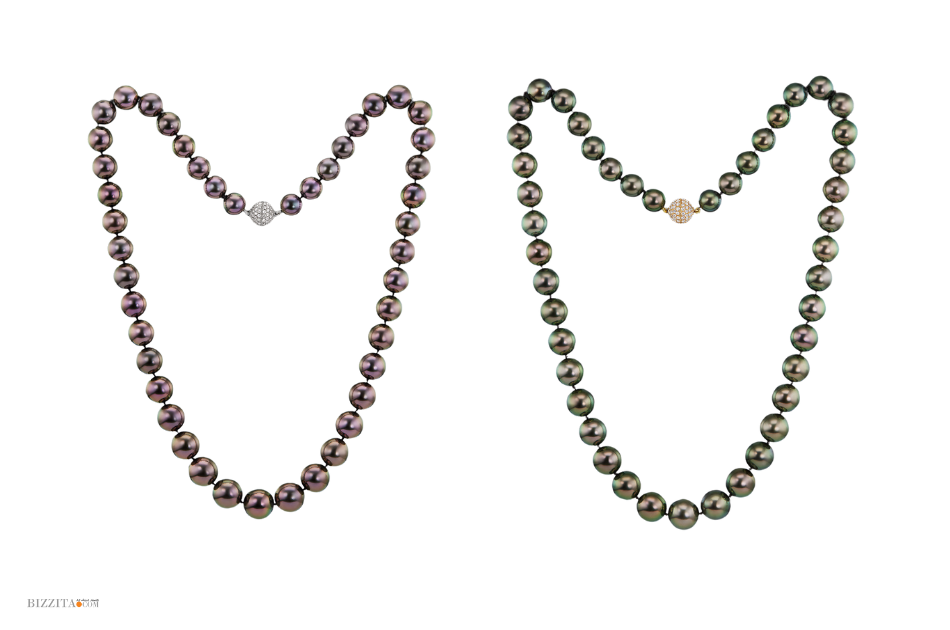
Assael
- The famous fashion icon Coco Chanel once said, “A woman needs ropes and ropes of pearls,” speaking to the timeless elegance and allure pearls bring to the modern wearer. This rich symbolism and cultural legacy resonate with those who wear pearls today, who not only value the gemstone's beauty but also seek to embrace its history and meaning.
- In China, dragons were said to carry pearls in their mouths, representing wisdom, power, and prosperity. Pearls thus became a symbol of status and strength, meant to protect wearers and bring them enduring good fortune. This idea lives on today, where pearls represent resilience, grounding, and elegance that withstand the test of time. Similarly, in Western lore, pearls were thought to be born from the tears of mystical sea creatures. These tales imbue each pearl with a sense of magic as if carrying the wisdom of past ages and the ocean's mysteries.
“A woman needs ropes and ropes of pearls,” Coco Chanel
- The saying "casting pearls before swine" originates from the Bible, specifically Matthew 7:6: “Do not give what is holy to the dogs; nor cast your pearls before swine, lest they trample them under their feet, and turn and tear you in pieces.”
This expression has become a widely recognized metaphor, meaning that precious or valuable things (pearls) shouldn’t be offered to those who cannot appreciate or understand their worth (swine). It suggests that beauty, wisdom, or refinement can be wasted on those who don’t have the capacity or inclination to value them.
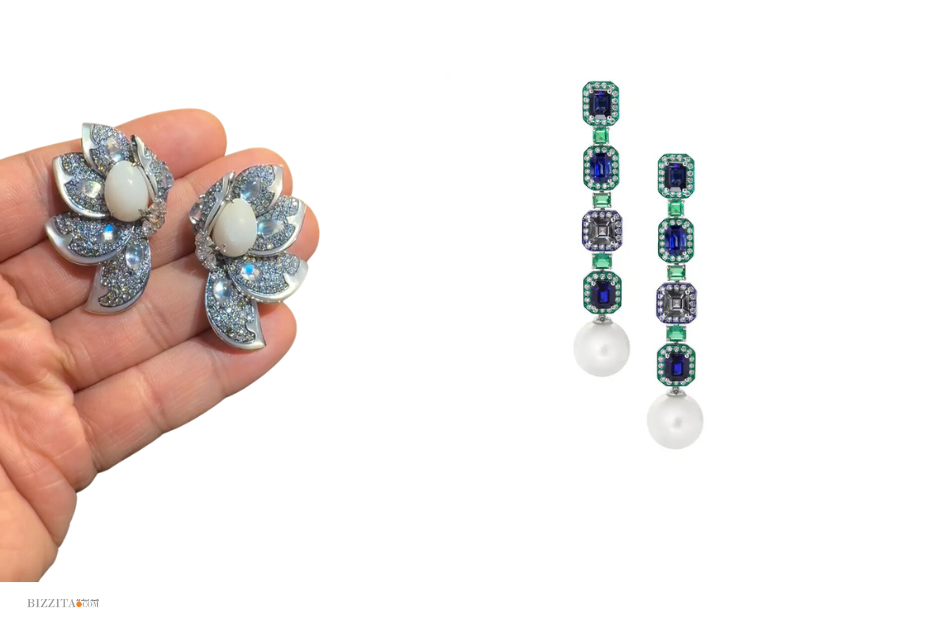
Austy Lee
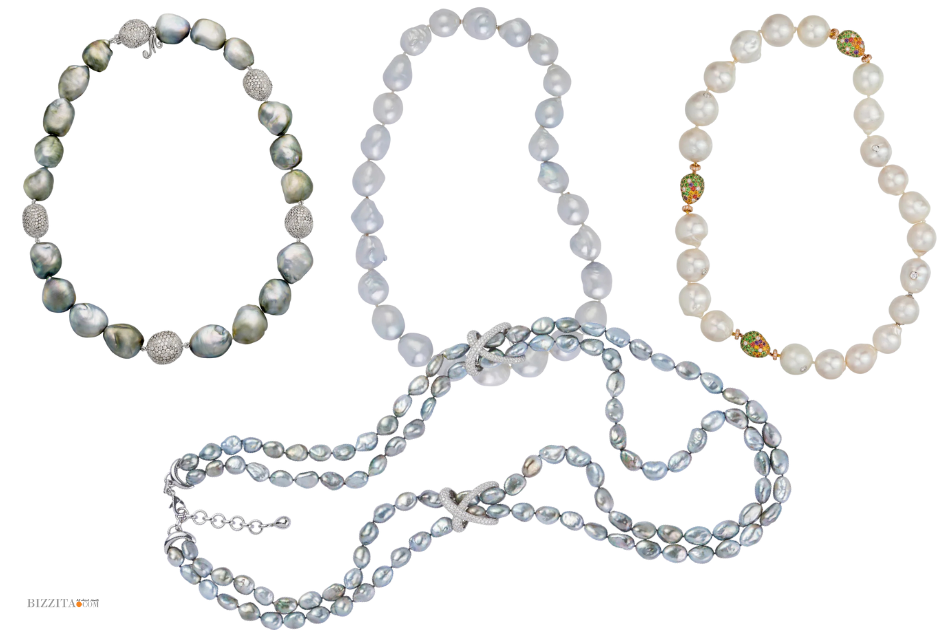
Margot McKinney
In a broader sense, the saying reminds us of the timeless appeal and intrinsic value of pearls—literal or symbolic—and the importance of offering precious physical or spiritual things to those who can truly appreciate them.
The Modern Tales
In modern global culture, pearls blend tradition, elegance, and individual expression. They carry unique meanings across various regions and resonate with people for their beauty, rarity, and understated luxury. Here’s a look at what pearls symbolize today across different cultures and contemporary contexts:
1. Elegance and Timelessness
- Across the globe, pearls are still regarded as timeless symbols of elegance and sophistication. Their refined look and subtle glow make them a favored choice for those who appreciate classic beauty. From Western brides to Japanese businesswomen, pearls represent an enduring, refined, timeless, versatile aesthetic.
2. Strength and Resilience
- Modern culture often views pearls as a metaphor for resilience and overcoming adversity. This symbolism stems from pearls forming inside an oyster through layers built around a slight irritant. Many see pearls as representing strength and inner beauty born from life’s challenges, an appealing narrative in today’s complex, fast-paced world.
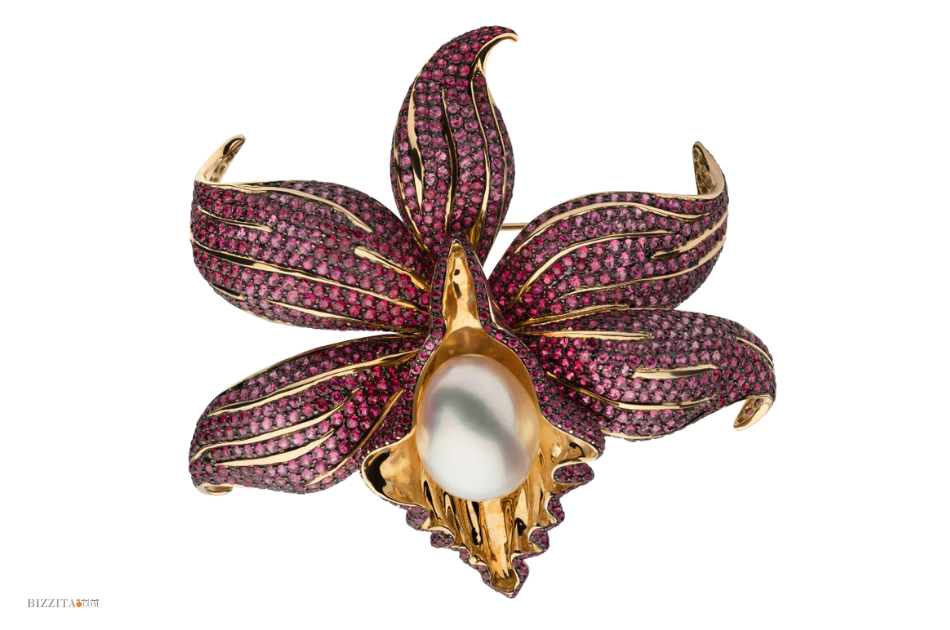
Autore
3. Sustainability and Natural Beauty
- Pearls have become icons of sustainable luxury. Unlike other gemstones that require mining, pearls can be farmed with relatively low environmental impact. Today’s eco-conscious buyers are drawn to pearls for their natural formation and environmental harmony, particularly as pearl farming often promotes clean water and biodiversity.
4. Individuality and Self-Expression
- With pearls now available in various shapes, colors, and styles, they are embraced as a form of self-expression and personal style. Modern jewelry designers incorporate unconventional shapes (like baroque pearls) and settings, catering to people looking for unique pieces that reflect their personality. Pearls are now as much about self-expression as about traditional beauty.
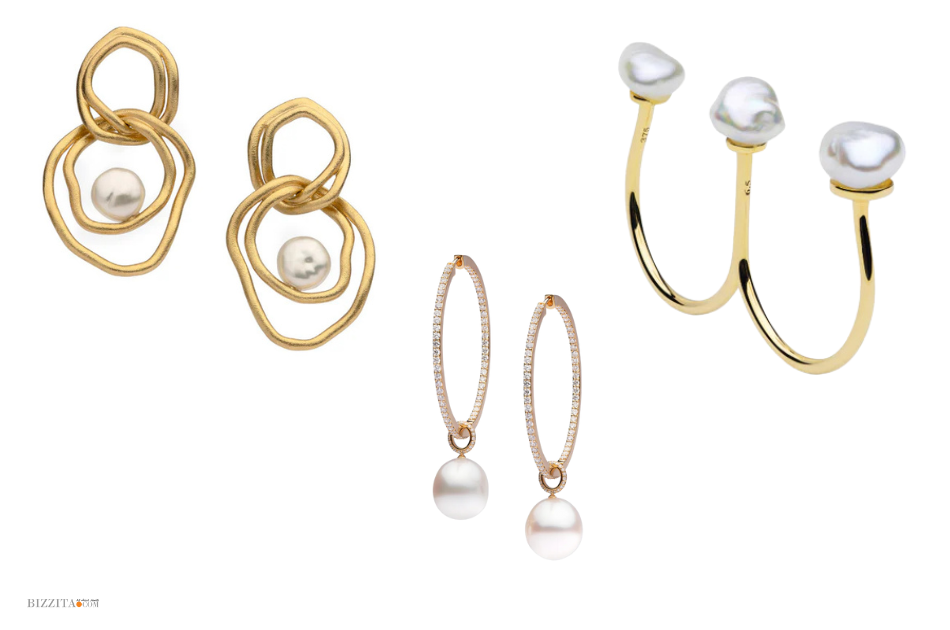
Autore
5. Mysticism and Spirituality
- In many cultures, pearls carry spiritual significance. They symbolize wisdom, protection, and purity, concepts that resonate deeply in today’s wellness-focused world. In Hindu culture, pearls are considered amulets of protection, while Chinese culture views pearls as symbols of prosperity and purity. This mystic and spiritual association makes pearls popular among those drawn to jewelry with a deeper meaning.
6. Modern Empowerment and Gender Fluidity
- In recent years, pearls have been redefined as symbols of empowerment and have shed their gendered association. Worn by figures like Harry Styles, A$AP Rocky, and Pharrell Williams, pearls (can) symbolize gender fluidity and breaking traditional norms. They appeal to those embracing modern masculinity and femininity, serving as versatile symbols of self-confidence and empowerment.
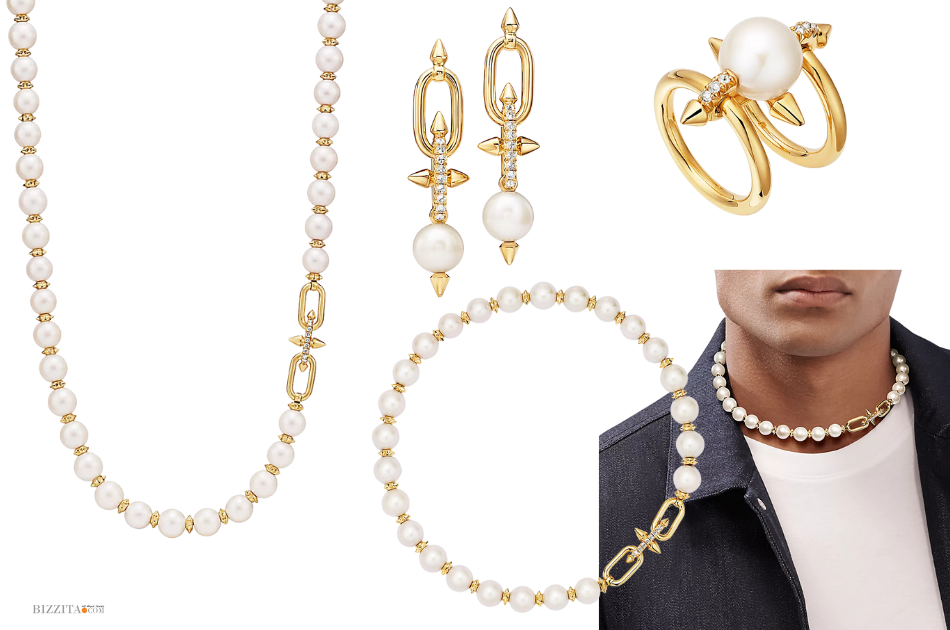
Tiffany (Pharrell Williams)
7. Wealth, Luxury, and Status
- Pearls remain associated with luxury, wealth, and status, particularly in high-end markets where rare pearls like South Sea and Tahitian are highly valued. In countries such as the United States, Japan, and the Middle East, high-quality pearls symbolize success and achievement, still holding their place as a prized possession in a luxury jewelry collection.
In essence, pearls today represent a dynamic fusion of heritage, environmental awareness, empowerment, and style, resonating with diverse audiences worldwide as symbols of tradition and transformation.
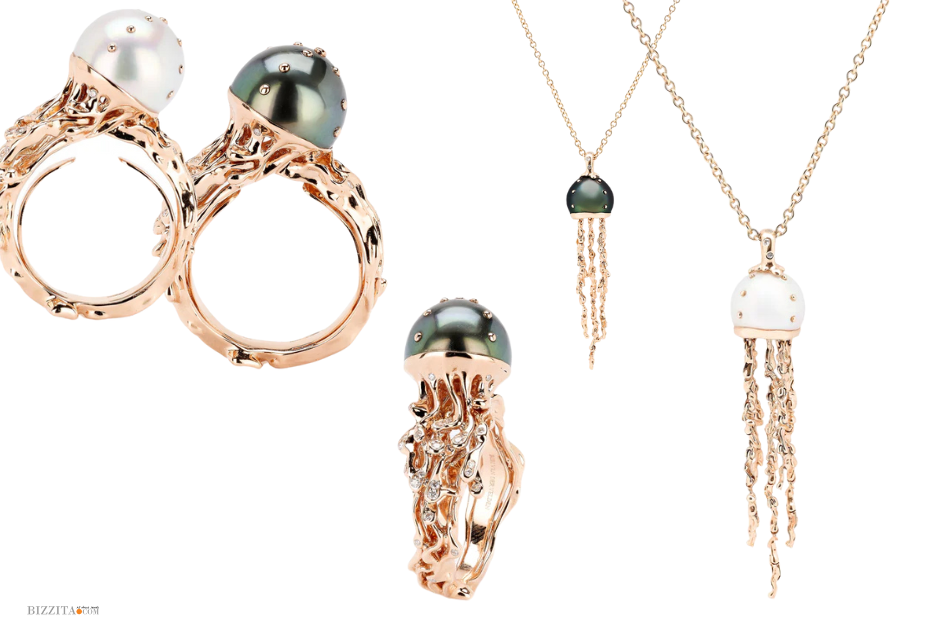
Bibi van der Velden
Finding the Perfect Pearl Piece for You
Choosing pearl jewelry is about finding what resonates with your personality, lifestyle, and style aspirations. Pearls come in countless shapes, sizes, and hues, so there’s truly something for everyone. Let’s explore a few distinct approaches:
Classic Elegance
For those drawn to the timeless allure of pearls, iconic brands like Mikimoto and Tiffany & Co. are ideal. Mikimoto’s signature Akoya and South Sea pearls are known for their lustrous quality and are often crafted into graceful, understated designs. Tiffany & Co. offers pieces with a slightly more modern twist but an unmistakable classic touch, making them suitable for daily wear or special occasions. Jewelmer specializes in South Sea pearls with that golden hue. Their pieces are lovely, and have made some impressive one-of-a-kind pieces, too.
Bold and Contemporary
If you're looking to break tradition, pearls can be refreshingly edgy. Designers like Zeemou Zeng and Austy Lee create pearl pieces that defy convention, pairing the natural beauty of pearls with striking materials, colorful gemstones, and unexpected shapes. Buzzanca is another fantastic brand that modernizes pearls by integrating them into vibrant, statement-making designs.
Exquisite Artistry
Look at Bibi van der Velden and Tasaki for those who see jewelry as art. Bibi van der Velden often incorporates whimsical, nature-inspired elements into her pearl jewelry, resulting in pieces that are as much art as adornment. Tasaki brings a unique Japanese perspective, merging minimalist design with a dash of avant-garde, ensuring that every piece feels exquisite and unique—also, Margot McKinney. Autore Pearls and Buzzanca Gioielli create fabulous high-end pearl jewelry, but do check out their more affordable pearl jewelry collections, too! At this level, there are many jewelry designers who don't work exclusively with pearls but do create some WOW pieces that may include a pearl. Ps.Check out Alessio Boschi.
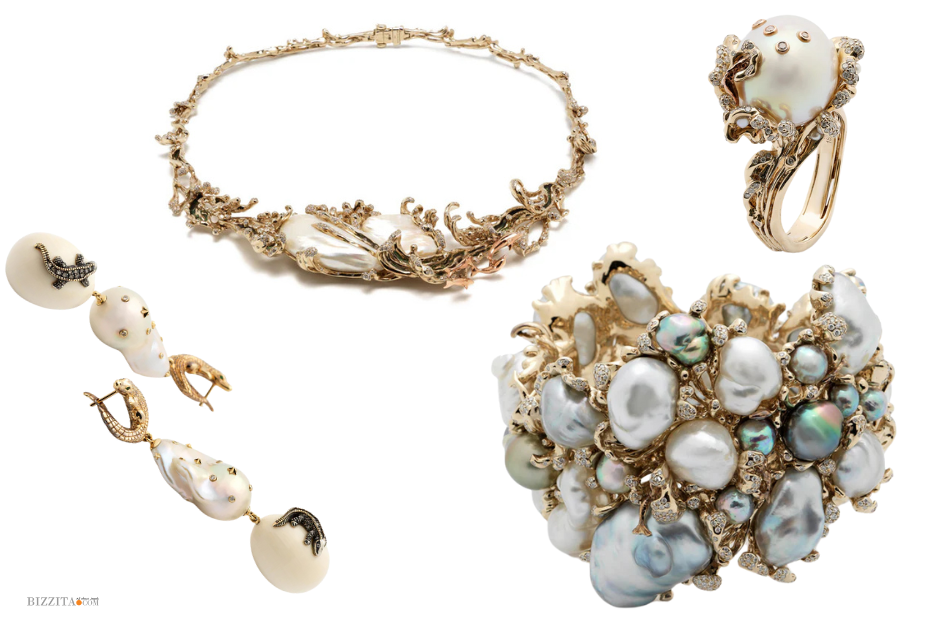
Bibi van der Velden
Edgy Luxe
Assael and Mikimoto, in collaboration with Comme de Garçon, cater to those with a taste for luxury with a bit of drama. Assael is known for its luxurious South Sea and Tahitian pearls.
New-Gen Glam
If you are young (at heart ;-) ) and you want to add a fresh and glamorous touch to your look but love the established jewelry houses, explore Yoko London and Tiffany & Co. Yoko London is celebrated for its vast color palette and innovative designs, making it easy to find a piece that feels current yet timeless. Tiffany's more contemporary pearl offerings, too, bring a mix of fun and sophistication. I also focus on young designers; Tabitha Charlton collaborated beautifully with renowned British jeweler Theo Fennell (Scromshaw Pearls). Australian brand PasPaley has some lovely pearl jewelry that looks fresh and contemporary. I adore the fabulous jewelry designer Melanie Georgacopoulos; her artistry and originality are mind-blowing! Alessandra Donà from Vicenza is becoming vastly more visible in the windows of jewelry stores, seeking to stand out.
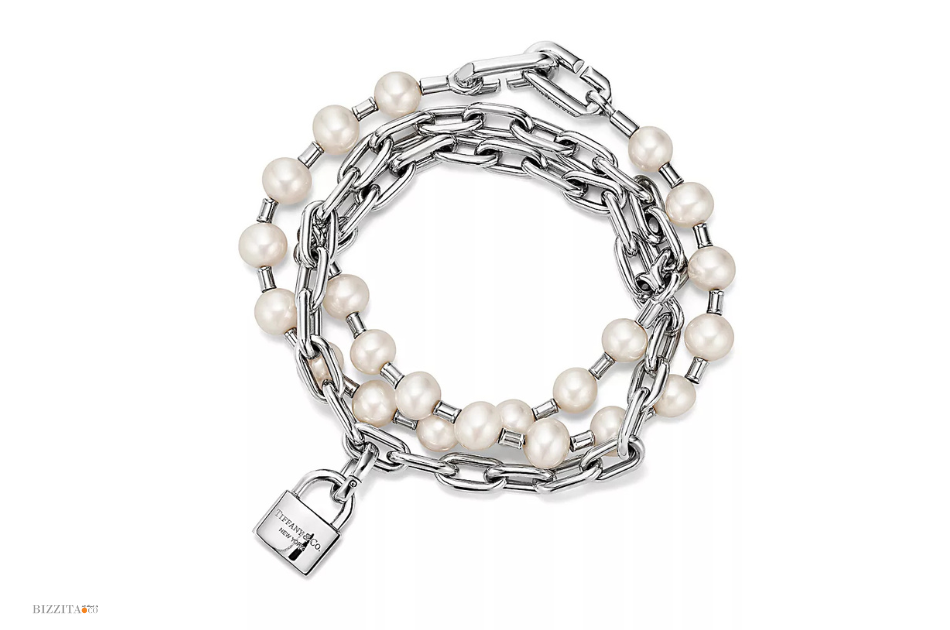
Tiffany
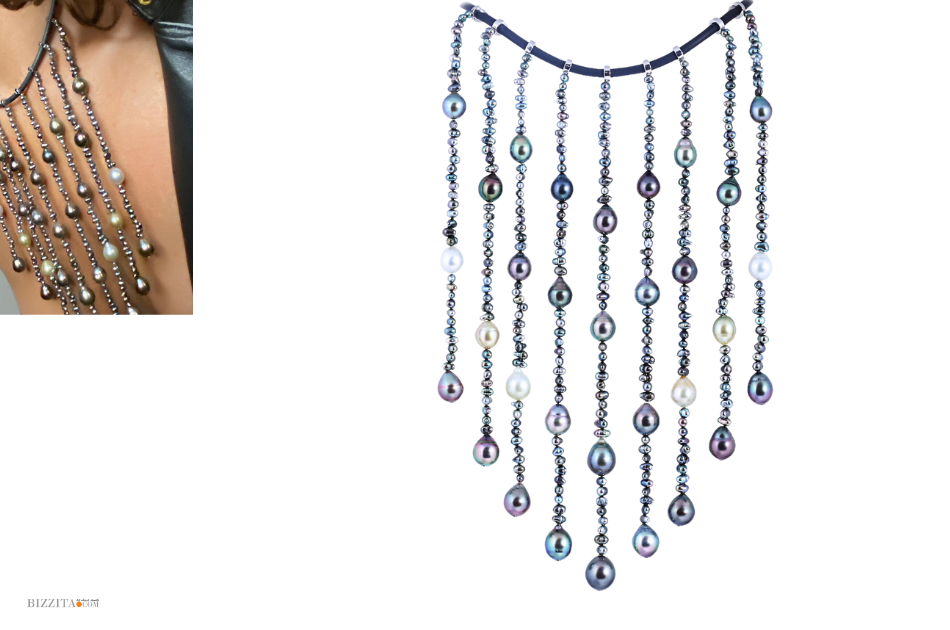
Buzzanca Gioielli
How Sustainable Are Pearls and Their Farmers?
The Positive Environmental Impact of Pearl Farms
Today, pearls are symbols of beauty and sustainability. The pearl farming process aligns with environmental needs, making these gems a conscientious choice for consumers who care about the planet. Pearl farmers, especially those in pristine areas like Tahiti, often champion ecological balance and marine preservation. Their livelihood depends on the health of the waters, as oysters thrive only in the cleanest environments. This relationship between the farm and the ecosystem encourages responsible practices that benefit both nature and the pearl industry.
Pearl farming has a unique symbiosis with the environment. By creating and maintaining oyster habitats, farms promote healthy marine ecosystems. For example, Tahitian pearl farms help protect coral reefs by supporting biodiversity around their farms. Oysters filter water as they feed, reducing pollutants and encouraging clearer, cleaner waters—a significant benefit to marine life.
Further Reading: Interested readers can find more on the sustainability of Tahitian pearls in resources from the CIBJO (The World Jewellery Confederation) and The Responsible Jewellery Council, which highlight pearls as some of the world's most sustainable gemstones.
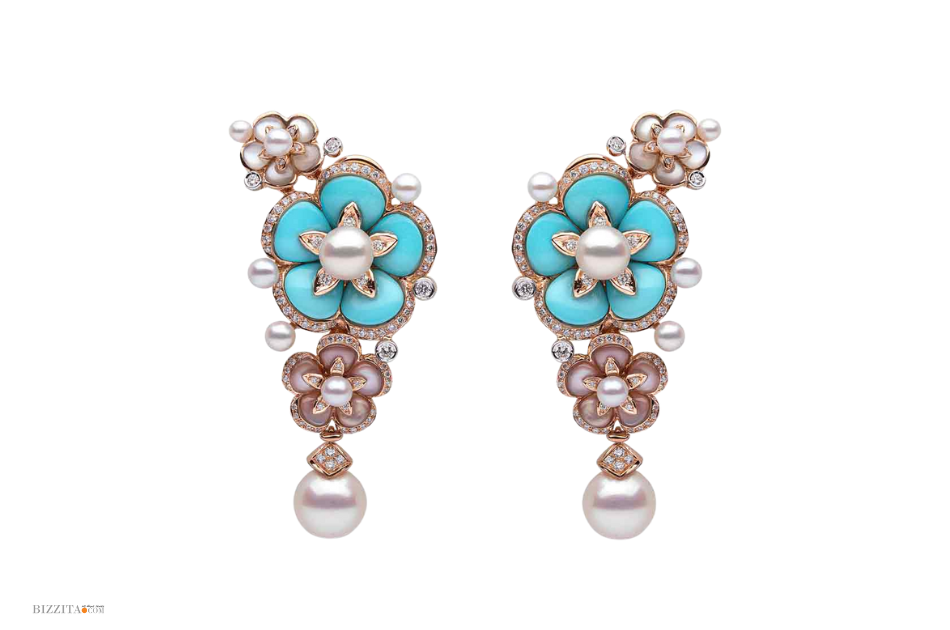
Yoko London
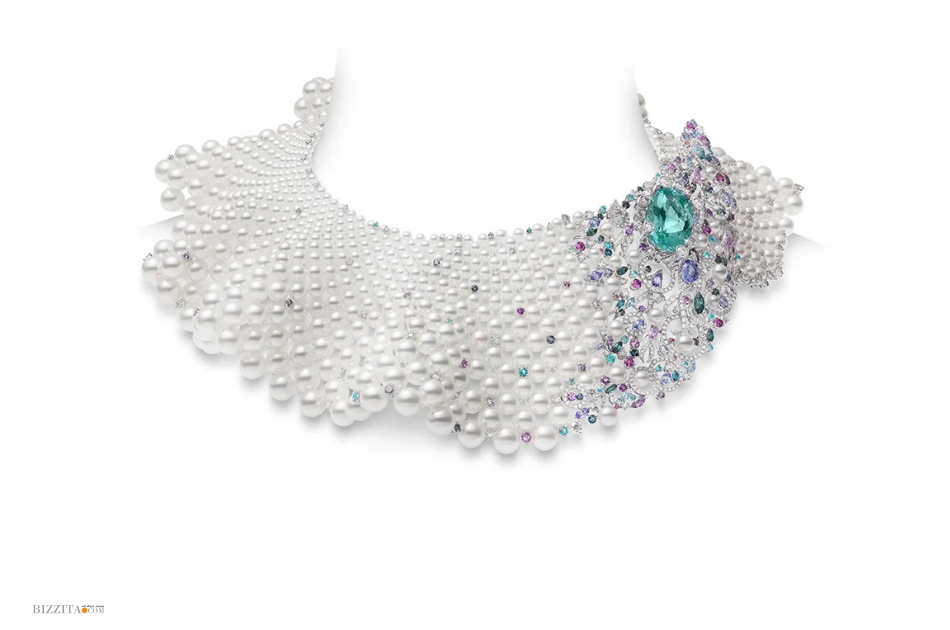
Mikimoto
Commitment to Sustainable Practices
Pearl farmers worldwide are actively engaged in eco-friendly practices. For instance, many farms in Australia and French Polynesia adhere to strict sustainability standards, ensuring the long-term health of the oceans. Hatcheries that breed oysters reduce the need to harvest wild stocks, preserving natural populations. Additionally, the growth cycle of pearls—often lasting two to three years—allows ample time for oysters to filter water and contribute positively to the marine habitat.
Sources: For an in-depth look at sustainable practices, The Gemological Institute of America (GIA) and Sustainable Pearls offer comprehensive guides on how modern pearl farming is evolving to meet environmental goals.
Spotlight on Tahitian Pearls: Beauty with a Positive Impact
Tahitian pearls are particularly noted for their sustainable approach. Farmed in the lagoons of French Polynesia, these black and gray pearls, which I adore, bring economic and ecological benefits to the region. Farms like these operate under strict guidelines, ensuring that the reefs around them remain vibrant and healthy. Tahitian pearl farmers are required to monitor the water quality and the well-being of their oysters, making these farms models for other pearl-producing regions.
According to the French Polynesian Ministry of Marine Resources, Tahitian pearl farming has become a significant driver of coral reef conservation, as healthy reefs mean better pearl quality and growth. It’s a perfect example of how luxury and sustainability can coexist, crafting pearls with a legacy of environmental responsibility.
Resources for More Information
For readers and jewelry professionals eager to explore more, here are some trusted resources:
- CIBJO (World Jewellery Confederation): CIBJO’s Pearl Commission regularly publishes guides and reports on ethical practices in pearl farming.
- The Responsible Jewellery Council (RJC) offers information on sustainability standards and certifies pearl farms and jewelers that meet rigorous environmental and ethical benchmarks.
- Gemological Institute of America (GIA): GIA provides insights into pearl farming techniques, sustainability, and the environmental benefits of responsible pearl cultivation.
- Sustainable Pearls: This organization collaborates with researchers and pearl farmers to promote sustainable practices in the pearl industry and provides updates on innovative practices worldwide.
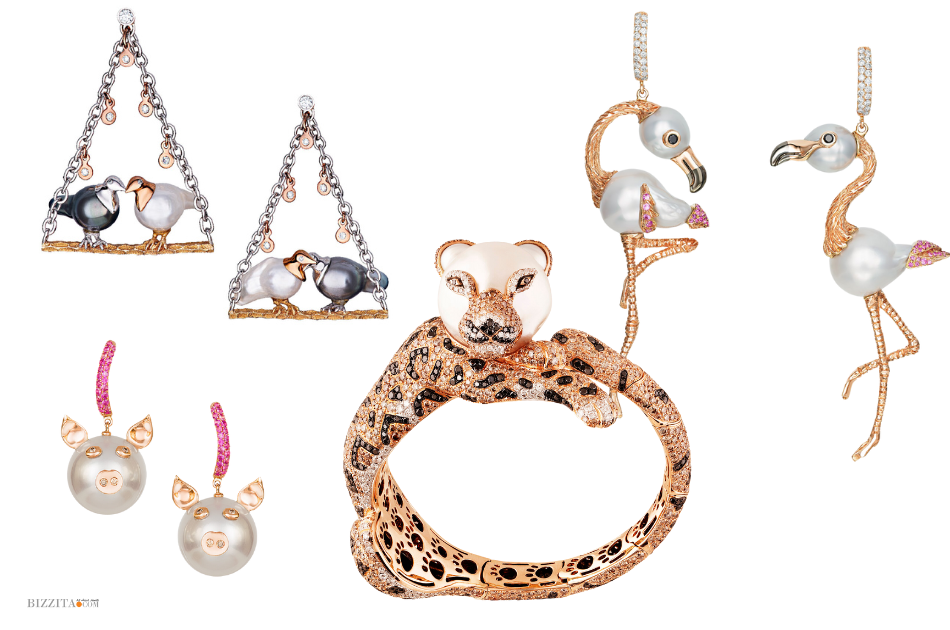
Buzzanca
Freshwater vs. Saltwater Pearls: What’s the Difference?
Freshwater Pearls
Cultivated mainly in lakes and rivers, freshwater pearls are often more affordable due to the cultivation process, which allows several pearls to grow simultaneously in a single mussel. Typically grown in China, these pearls range in color from white and cream to pastel pinks and lavenders. Freshwater pearls are known for their softer luster and varied shapes, often including oval, button, and baroque forms. They’re a popular choice for their affordability and versatility, with prices starting at a fraction of those of saltwater pearls.
Saltwater Pearls
Saltwater pearls, cultivated in oysters in the ocean, include well-known types like Akoya, Tahitian, and South Sea pearls. These pearls usually feature higher luster and more consistent round shapes. The Akoya pearls from Japan are classic white or cream pearls with a stunning mirror-like luster, often considered the epitome of elegance. Tahitian pearls, beloved for their exotic dark colors (gray, black, green), are cultivated in French Polynesia. In contrast, South Sea pearls are larger, often golden or silvery, and grown in Australia and the Philippines. Due to their longer cultivation time and the environmental needs of their oysters, saltwater pearls are rarer and generally higher priced.
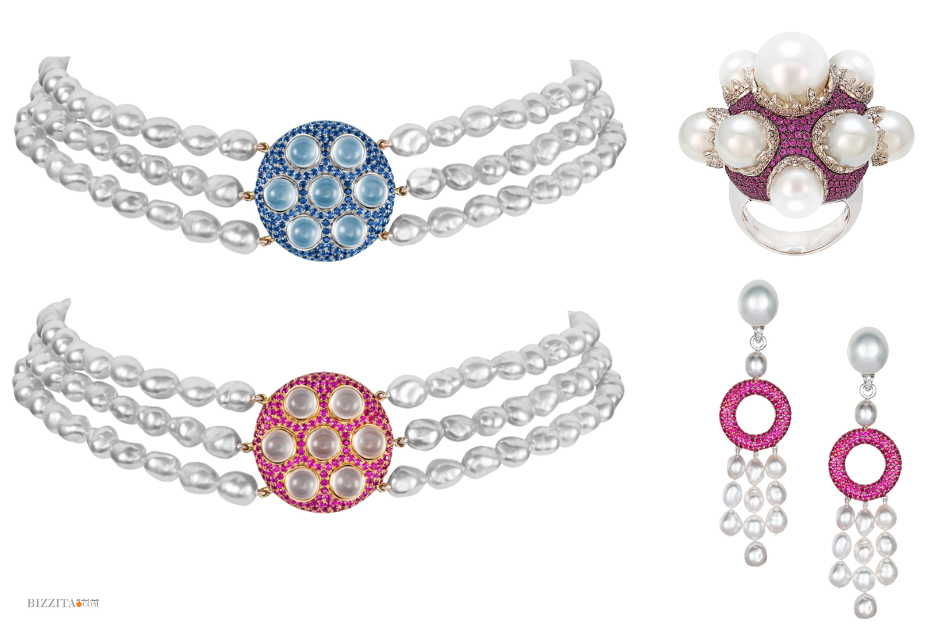
Buzzanca Gioielli (reversible jewelry)
Price Differences: Freshwater vs. Saltwater, Natural vs. Cultured
Natural vs. Cultured Pearls
Natural pearls, formed without any human intervention, are exceptionally rare, with strands costing tens of thousands—even hundreds of thousands—of dollars. By contrast, cultured pearls, which grow with a bit of help from pearl farmers, make up the majority of pearls on the market. The controlled process of cultured pearls results in consistently rounder shapes and a wider variety of colors and sizes, offering luxury at more accessible prices.
Comparing Prices of Pearl Strands
- Natural Pearls: For instance, a strand of natural pearls—highly valued due to their rarity—can easily reach €50,000 or far more, depending on luster, size, and origin.
- Cultured Pearls: In comparison, a similar strand of high-quality Akoya cultured pearls of the same size might range from €5,000 to €10,000, while freshwater cultured pearl strands start as low as €200 for smaller, less lustrous pearls.
- Note: This is just a general indication; prices may vary, depending also on size and quality. It is just a rough indication, but when buying a strand of pearls, ask for comparison strands so you can see the difference in size, how equally colored and lustrous the pearls are (or aren't), and so forth, to gain a bit more knowledge by comparison.
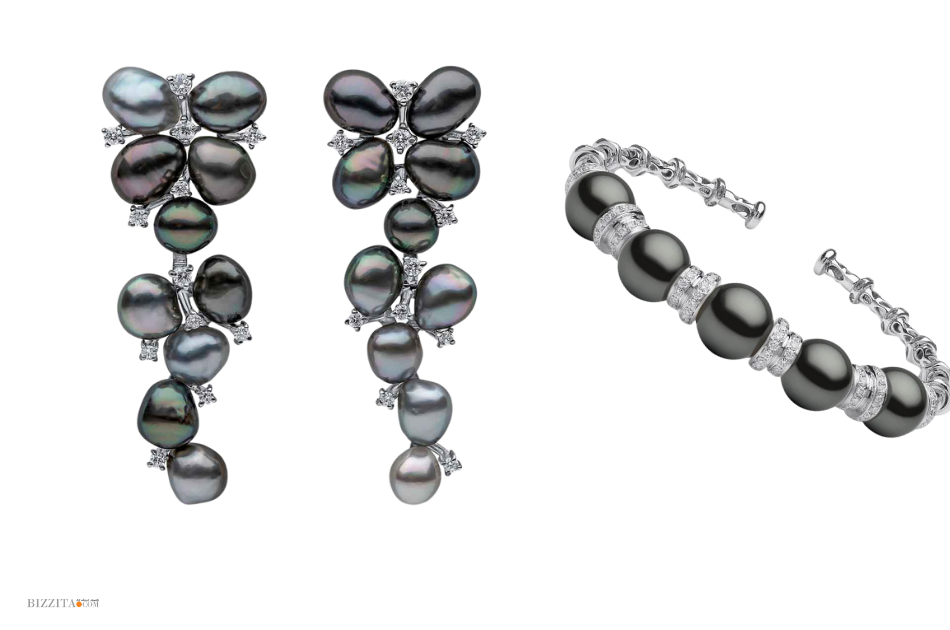
Yoko London
The Beauty of Nacre and Luster: What Sets Pearls Apart
The beauty of a pearl lies in its nacre – the layers of aragonite crystals that form naturally within the oyster or mussel. Nacre thickness influences both the durability and luster of the pearl. High-quality pearls have a thick layer of nacre, which gives them a deep, mirror-like shine. Lesser-quality pearls may have a thinner nacre layer, appearing less lustrous and more prone to wear.
Pearls are also graded by their luster, with terms like “excellent,” “good,” and “fair” used to describe their reflective quality. This unique luster distinguishes pearls from other gems, giving them a soft, radiant glow that enhances any skin tone.
Types of Pearls and Their Unique Characteristics
- Akoya Pearls: Produced by the Pinctada fucata oyster, primarily in Japan. Known for their brilliant white color and mirror-like luster, they are prized for their classic round shape.
- Tahitian Pearls: Cultivated in Pinctada margaritifera oysters in the lagoons of French Polynesia, known for their deep, exotic colors.
- South Sea Pearls: Produced by Pinctada maxima oysters, these pearls are large, typically 10-16mm, and come in shades of white, silver, and gold.
- Freshwater Pearls: These pearls, grown in Hyriopsis cumingii mussels in lakes and rivers, primarily in China, often feature varied shapes and pastel colors.
- Keshi Pearls: Unique by-products of the cultured pearl process, without a bead nucleus, often baroque in shape with high luster.
Each type offers its appeal, making pearls a versatile option for jewelers and consumers.
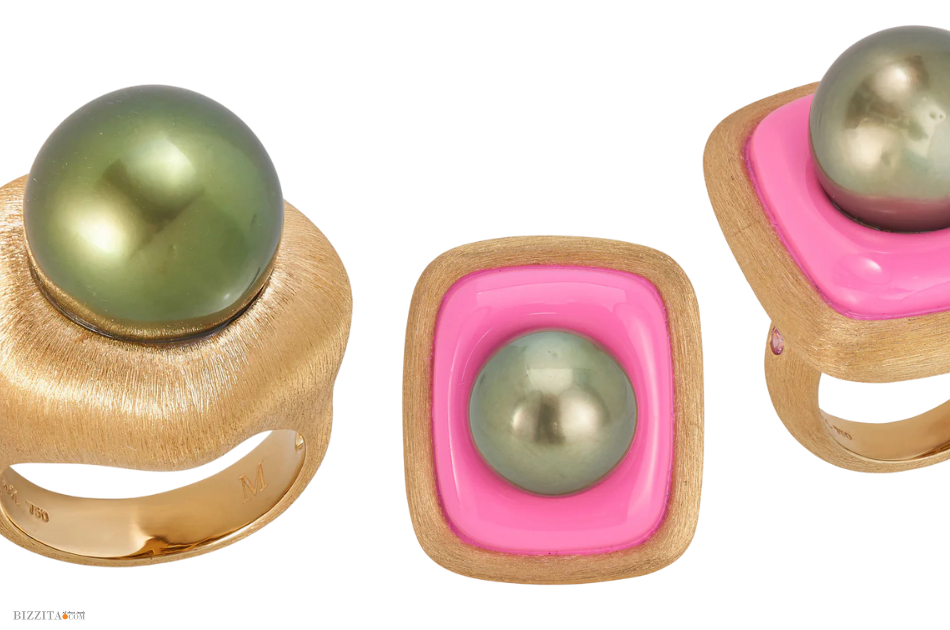
Margot McKinney
The Allure of Baroque Pearls: Beauty in Imperfection
Baroque pearls, with their unconventional shapes and organic contours, showcase the beauty of nature’s unpredictability. Unlike the classic round pearl, Baroque pearls are asymmetrical and often irregular, with curves, dips, and ripples that create a one-of-a-kind silhouette. These pearls can take on shapes resembling drops, ovals, and even abstract forms, giving each one a unique character and story.
In recent years, Baroque pearls have become popular symbols of individuality and natural beauty. Jewelers and designers like Bibi van der Velden and Zeemou Zeng celebrate these pearls for their artistic appeal, incorporating them into statement pieces highlighting their unconventional charm. The Baroque pearl’s distinct luster and texture offer a new perspective on elegance—perfect for those who seek something extraordinary and unapologetically bold.
Baroque pearls carry this free-form beauty and are more accessible than perfectly round pearls, making them a versatile option for many jewelry lovers. They’re a reminder that beauty often lies in the unexpected, and their unique forms add a fresh, artistic touch to any jewelry collection.
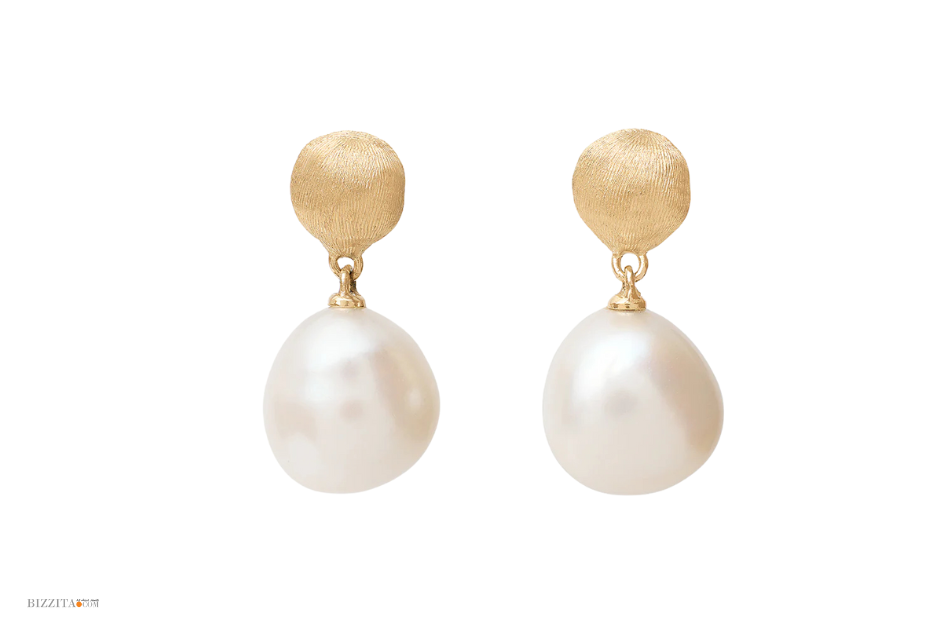
Marco Bicego
The Color Spectrum of Pearls: From Subtle Hues to Vibrant Tones
Pearls come in an array of colors, each carrying its own aesthetic and symbolic appeal. While white and cream pearls are the most traditional, there’s a stunning spectrum available—allowing for unique personal expression. Based on the CIBJO guidelines, here are the primary pearl colors and what makes each one special:
- White: Classic, elegant, and versatile white pearls (common in Akoya and South Sea varieties) are synonymous with purity and sophistication.
- Cream and Gold: These warm tones in South Sea pearls evoke a sense of luxury and are highly prized for their rarity, particularly golden hues cultivated in Australian and Philippine waters.
- Black and Gray: Tahitian pearls, known as “black pearls,” actually range from dark gray to black with overtones of green, blue, or peacock hues. These colors convey mystery and modern elegance, making them a favorite among fashion-forward individuals.
- Rose, Lavender, and Pink: Freshwater pearls are known for their pastel tones, including pink, rose, and lavender, which add a romantic and whimsical touch to any piece.
- Peacock Green: This unique color, particularly in Tahitian pearls, shows a beautiful mix of green, purple, and blue overtones and is highly valued for its depth and vibrancy.
Pearls’ colors arise naturally from the type of mollusk, the water conditions, and the composition of the nacre. While some colors are enhanced through treatments, these natural hues are celebrated for their authenticity and organic beauty.
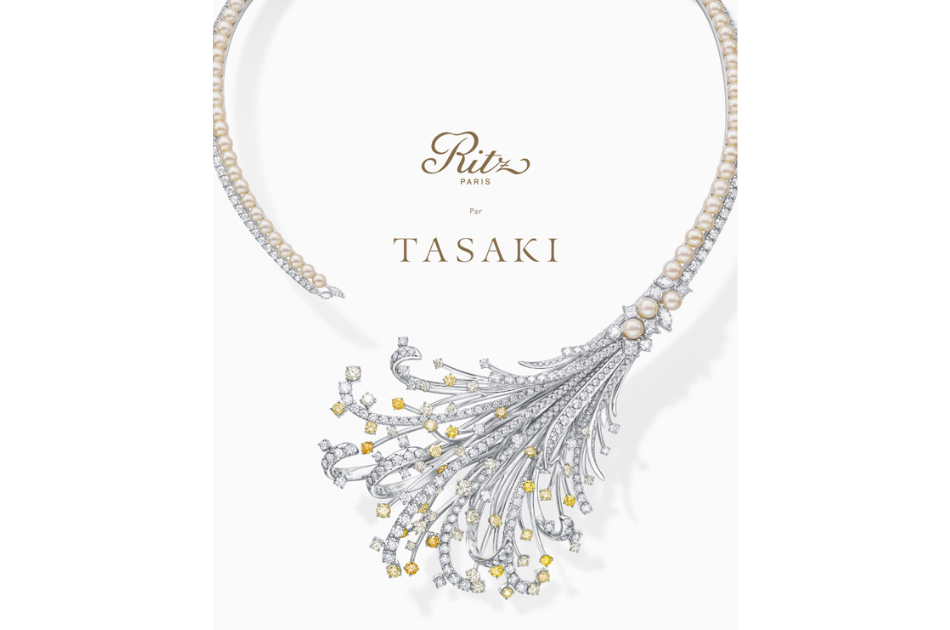
Tasaki
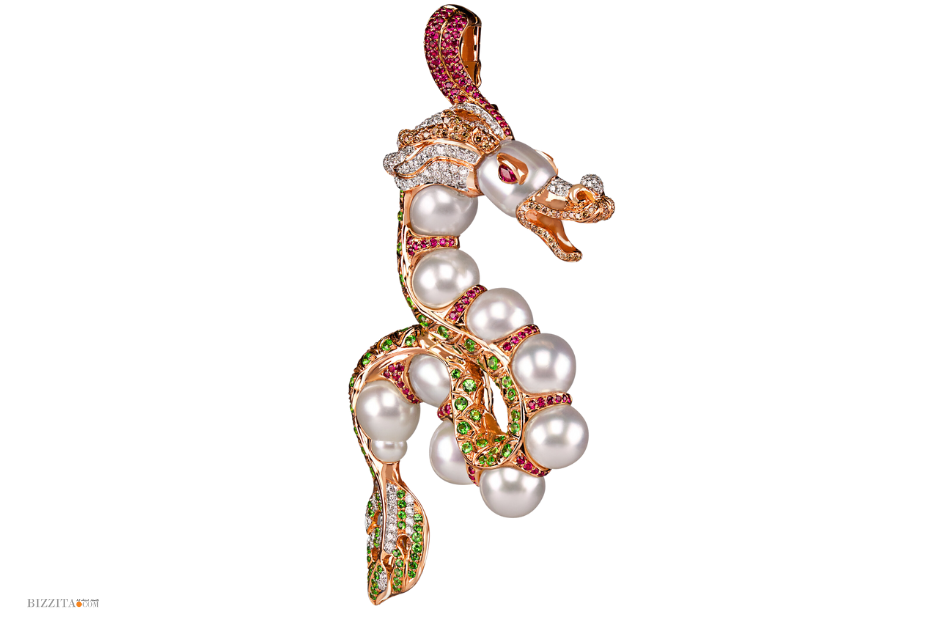
Buzzanca
Pearls in 2025 Fashion Collections
Pearls are significantly impacting the fashion scene for Spring/Summer 2025, with a host of designers showcasing their timeless allure and adaptability. For instance, Chanel’s Spring-Summer 2025 collection prominently featured pearls in layered necklaces, chokers, and accessory embellishments, adding a modern twist to classic elegance. This trend extended to Dior’s lineup, where pearls graced jewelry and garment details, imbuing each look with sophistication. At the same time, Prada incorporated pearl-adorned headbands and earrings to create a bridge between tradition and contemporary style.
Beyond these iconic brands, up-and-coming designers are also embracing pearls. At New York Fashion Week, jewelry designer Presley Oldham presented his debut collection with signature pearl pieces, highlighting their enduring appeal. Similarly, Richard Quinn brought a dramatic flair to pearls in his Spring/Summer 2025 collection, where pearl embellishments balanced his avant-garde designs with a touch of classic elegance. Drawing on a different inspiration, Simone Rocha infused her ballet-inspired collection with delicate pearl details, embodying femininity and grace. Nensi Dojaka, known for her sculptural silhouettes, also incorporated pearls into her designs, achieving a striking balance of sensuality and sophistication.
These designers’ creative approaches showcase the versatility of pearls as a fashion element, seamlessly woven into diverse narratives that honor classic charm and innovative flair. For Spring/Summer 2025, pearls are not just an accessory but a statement that speaks to this natural gem's enduring and evolving beauty across high fashion.
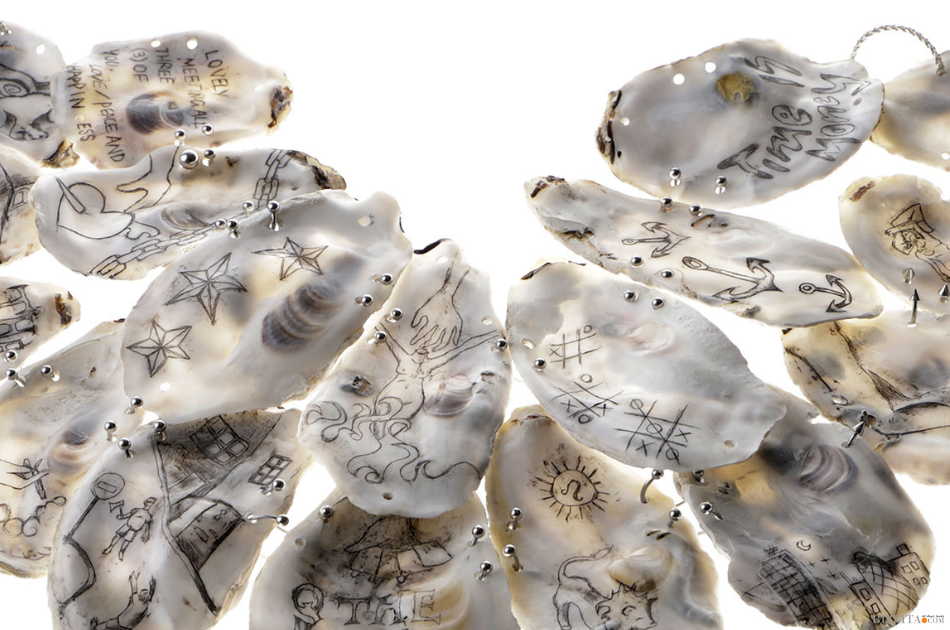
Tabitha Charlton (_call_me_tabs)
Famous People's Quotes on Pearls
- Grace Kelly – "I favor pearls on screen and in my private life."
Grace Kelly’s words highlight the versatility and elegance of pearls, making them perfect for any occasion. - Jackie Kennedy – "Pearls are always appropriate."
Jackie Kennedy, an icon of sophistication, believed pearls to be the ultimate accessory for any outfit or event. - Coco Chanel – "A woman needs ropes and ropes of pearls."
Chanel’s iconic quote emphasized that pearls were essential in a woman’s wardrobe, representing style, beauty, and luxury. - Oscar Wilde – "A pearl is a beautiful thing that is produced by an injured life. It is the tear (that results) from the injury of an oyster. The treasure of our being in this world is also produced by an injured life."
Oscar Wilde reflects on the pearl as a metaphor for resilience and beauty emerging from struggle. - Imelda Marcos – "I’d rather have pearls on my neck than diamonds on my toes."
Known for her love of fashion and luxury, Imelda Marcos viewed pearls as a classy and preferred to other gemstones. - Chinese Proverb – "Pearls don’t lie on the seashore. If you want one, you must dive for it."
This proverb suggests that pearls, like all things of value, require effort and commitment to attain. - Edgar Allan Poe – "I have been happy, though in a dream. I have been happy and love the memory of that white and silent pearl-like world that lies before me."
Poe poetically describes the serenity and purity associated with pearls, invoking imagery of a peaceful, dreamlike state. - Diana Vreeland – "I adore that pink… it’s the navy blue of India." (when referring to the pink of a conch pearl)
Vreeland, a legendary fashion editor, celebrated pearls' unique color and allure, especially those that embody rare hues. - Japanese Proverb – "One cannot tie a knot with only one hand."
Though not directly about pearls, this saying, often linked to strings of pearls, symbolizes unity and partnership, as pearls are traditionally strung together to create necklaces. - Margaret Mead – "Always remember that you are absolutely unique. Just like everyone else."
Mead’s words align with the individuality found in baroque pearls, each uniquely beautiful in its form. - Rumi – "You are not a drop in the ocean. You are the entire ocean in a drop."
While this quote isn’t specifically about pearls, it is often used in the context of pearls’ connection to the ocean and their encapsulation of the sea’s energy and beauty. - Indian Proverb – "Pearls lie not on the seashore; if thou desirest one, thou must dive for it."
Another reminder of the preciousness of pearls suggests that valuable things require effort and commitment to be attained.
These sayings and quotes emphasize pearls' timeless elegance, connection to beauty and strength, and symbolic meanings across cultures.
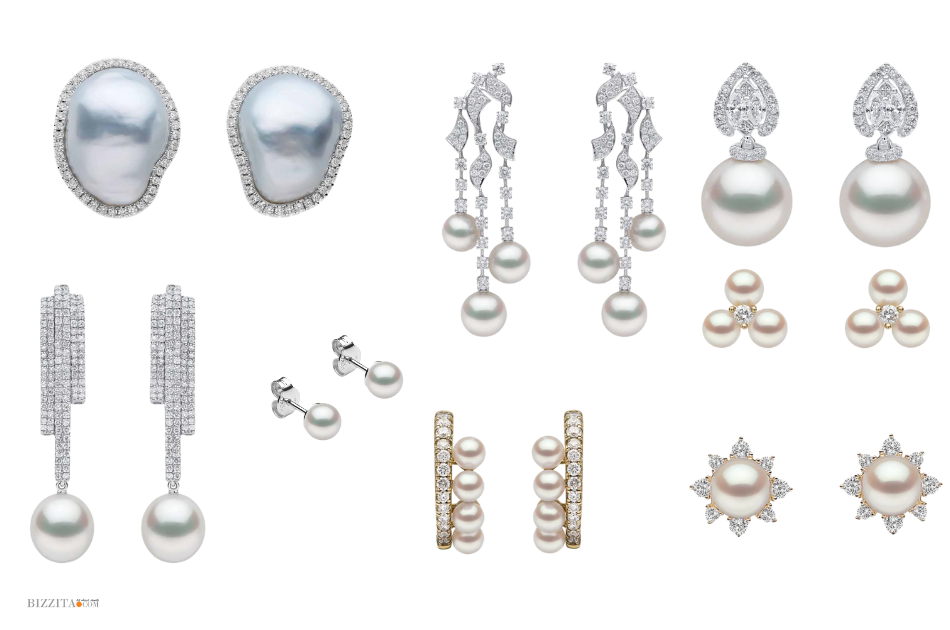
Yoko London
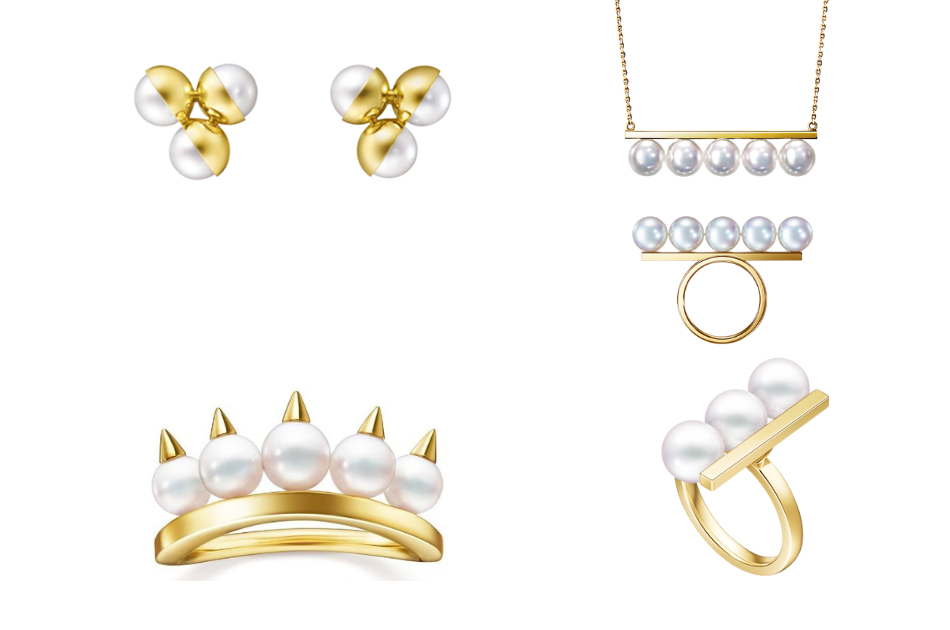
Tasaki
What is Pearl Hunting
Pearl hunting, the ancient practice of free-diving to collect natural pearls from oysters, has been a significant cultural and economic activity across various regions. Let's explore the countries where this tradition thrived, the unique names of these divers, their motivations, and some intriguing facts.
Countries and Diver Nomenclature
-
Japan: In Japan, female divers known as Ama have been harvesting pearls, abalone, and other seafood for over 2,000 years. These women are renowned for their free-diving skills, often diving without modern equipment.
-
United Arab Emirates (UAE): Pearl diving was a cornerstone of the UAE's economy before the discovery of oil. Divers, referred to as Ghawas, would embark on extensive sea voyages to collect pearls, enduring challenging conditions.
-
Bahrain: Known for its high-quality natural pearls, Bahrain's divers, also called Ghawas, played a pivotal role in the pearling industry. The Bahrain pearling trail is now a UNESCO World Heritage Site, preserving this rich history.
-
Qatar: Before the oil era, Qatar's economy heavily relied on pearl diving. Divers, known locally as Ghais, would spend months at sea, free-diving to gather oysters.
-
Australia: In Broome, Western Australia, the pearling industry attracted divers from various backgrounds, including Indigenous Australians, Japanese, and Malays. These divers were collectively known as Pearlers.
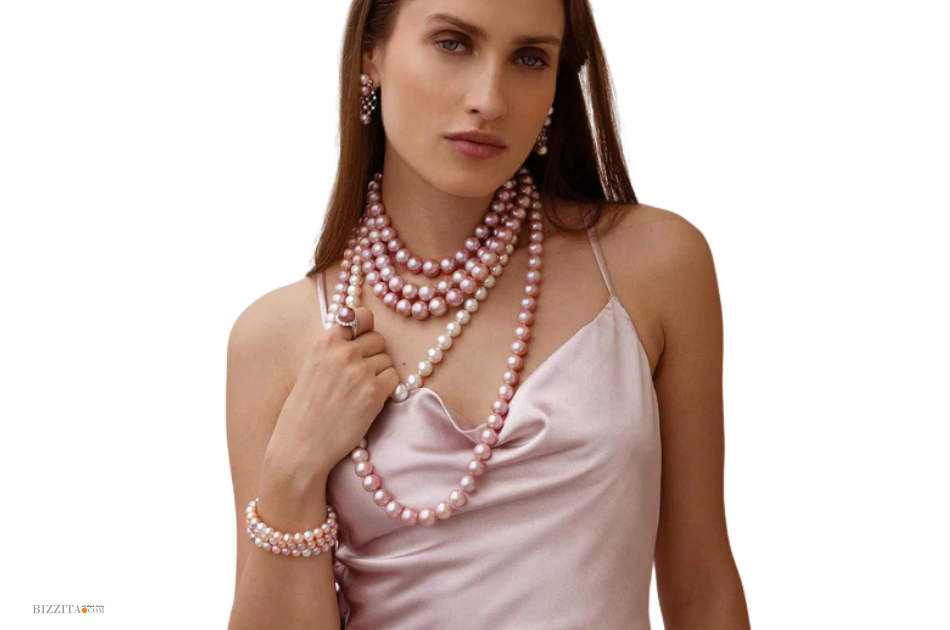
Yoko London
Motivations for Pearl Diving
The primary motivation for pearl diving was economic. Natural pearls were highly valued and served as a significant source of income for coastal communities. In regions like the Arabian Gulf, pearls were a major export commodity, sustaining local economies before the discovery of oil.
In Japan, beyond economic reasons, the Ama divers' practice was deeply rooted in cultural traditions, with skills passed down through generations.
Whimsical Facts
-
Ama Divers' Longevity: Many Ama divers continue their practice well into their 70s and 80s, attributing their longevity to the physical activity and breath-control techniques honed over decades.
-
Pearl Diver Superstitions: In the Arabian Gulf, divers often performed rituals and sang traditional Al-Nahma songs to seek protection and success during their perilous journeys.
-
Diving Techniques: Traditional pearl divers used minimal equipment. For instance, Ama divers employed a technique called Isobue, a distinctive whistling exhalation upon resurfacing, believed to regulate breathing and reduce the risk of decompression sickness.
These insights highlight the rich tapestry of pearl diving traditions worldwide, reflecting economic necessity, cultural heritage, and human resilience.
Melanie Georgacopoulos
Pearl Jewelry Buying Guide for Every Market Segment: Mid-Level to Ultra-Luxury Stores
For years, I’ve immersed myself in the jewelry world, exploring trends, stories, and the symbolism that makes each piece truly captivating. In this guide, I’m sharing insights on why pearls have captured the spotlight and providing practical tips for retailers on making pearls a part of their collections. I go much more profound for my clients—creating tailored storytelling advice, employee training, and extensive brand recommendations to enhance sales strategies. But here, my goal is simple: if even one of these ideas helps a jewelry retailer spark interest in pearls, then I’m thrilled to have made a difference.
In this article, we’ve explored why pearls are making waves today, their rich history, and the myths surrounding them. I’ve poured my passion into understanding pearls from every angle, and I’m not alone in my admiration for them—the stories behind pearls are enchanting! While I’m not a pearl expert, I’ve consulted reputable sources to share this information. If you’re an expert and notice any areas for improvement, I’d love to hear from you. At Bizzita, we’re all about caring, sharing, and inspiring.
Jewelry retailers face the challenge of balancing “what always sells” with introducing new brands and products that attract fresh eyes. The same-old, same-old may feel safe, but it doesn’t always inspire or engage a new audience. I’ve structured this guide to offer ideas for different types of jewelry stores, from mid-level to ultra-luxury. Each section provides a “why,” buying considerations, storytelling tips, and brand or style recommendations. I hope these insights inspire you to bring a new sparkle to your collections. After all, if just one tip resonates with you and helps enhance your offerings, I consider that a success!
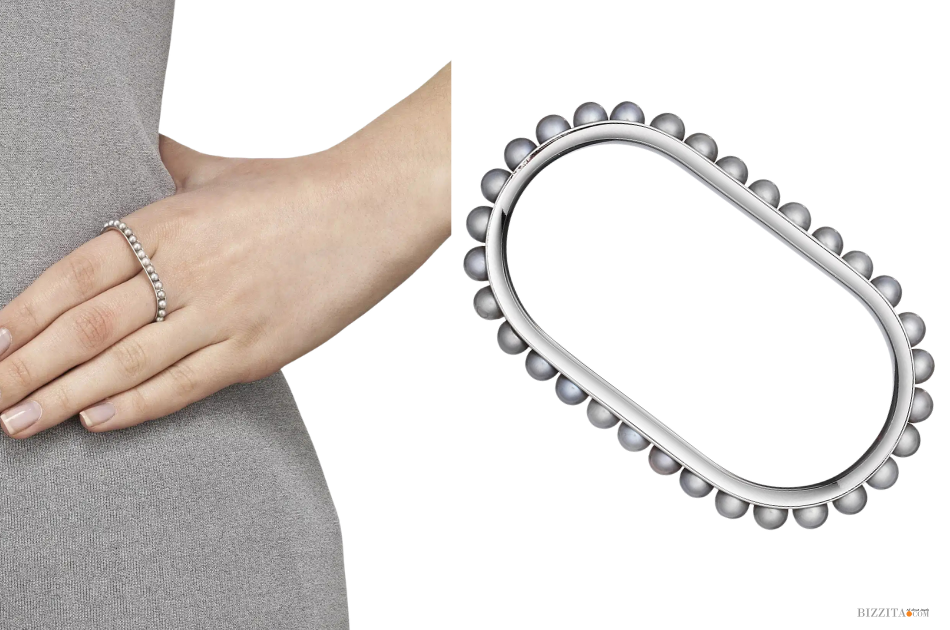
Melanie Georgacopoulos
Mid-Level Jewelry Store (500-5,000 EUR Range)
Why to Buy Pearl Jewelry
For a jewelry store serving a clientele from rural or less metropolitan areas, pearls present an opportunity to introduce customers to a blend of timeless style and current trends. Though this customer base may lean conservative, their online presence means they’re informed about global trends, including pearls as the latest must-have accessory. Pearls offer versatility, bridging traditional elegance with modern sophistication, appealing to all ages.
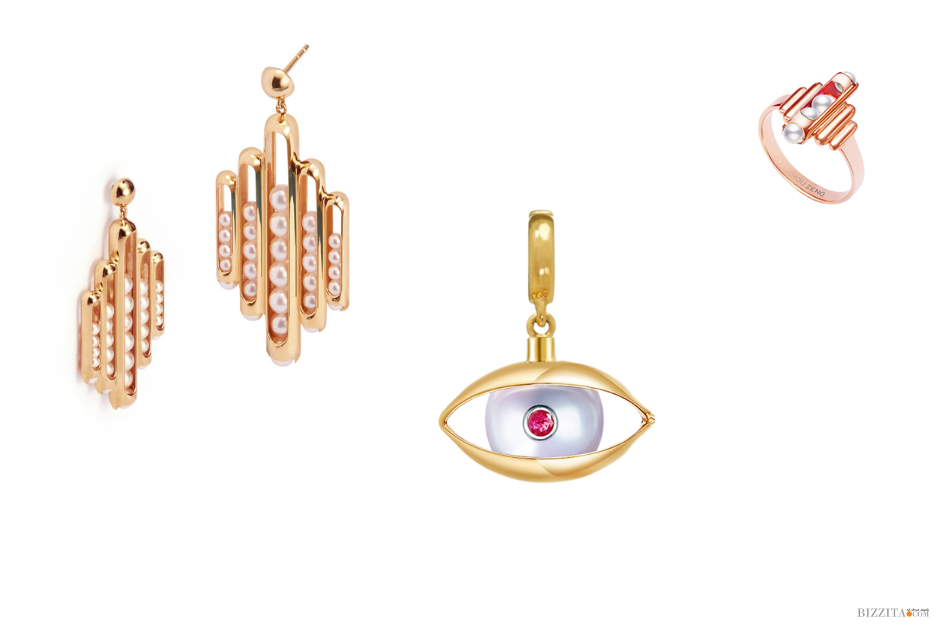
Zeemoe Zeng
Buying Considerations
- Brand Selection: Choose brands that balance quality and trend appeal. Look for brands offering moderately priced pearl jewelry, such as Yoko London and Mikimoto (for accessible pieces), with options in Akoya or freshwater pearls.
- Style Range: Stock a mix of classic and contemporary pieces. Classic single-strand necklaces or stud earrings appeal to traditional customers, while asymmetrical or mixed-metal designs attract younger clients.
- Education and Storytelling: Showcase pearls’ cultural and symbolic value, such as their historical appeal to royalty and connection to sustainability. Highlighting pearls' timeless appeal can make customers feel they’re investing in more than just a trend.
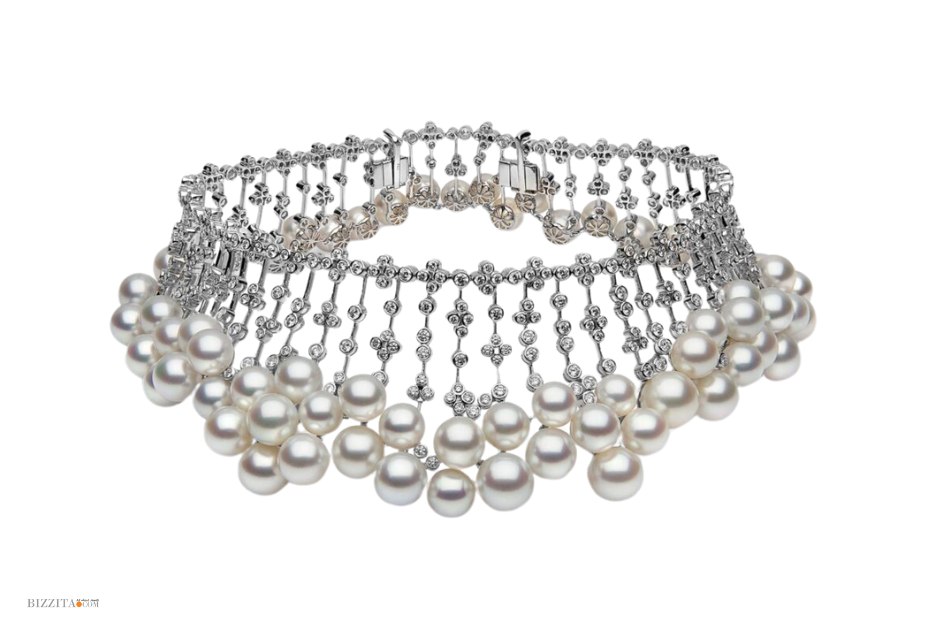
Yoko London
Mikimoto (Bows)
High-End Jewelry Store (1,000-100,000 EUR/USD Range)
Why to Buy Pearl Jewelry
Pearls represent luxury, rarity, and sophistication for a high-end store. The demand for refined, high-quality pearl pieces—especially those with unique colors, large sizes, and unusual shapes—is rising. The resurgence of pearls, especially Tahitian and South Sea, makes them a valuable addition to a high-end collection, appealing to discerning clients seeking something classic and on-trend.
Buying Considerations
- Brand Recommendations: Partner with luxury brands such as Assael, Buzzanca, and Tasaki. These brands offer innovative designs and high-quality South Sea or Tahitian pearls that complement a high-end collection.
- Jewelry Style: Offer an edgy-classic mix—timeless designs with a modern twist. Statement necklaces with unique pearls, such as baroque or Tahitian, and layered pearl strands are excellent options.
- Client Education: Inform clients on the uniqueness of each pearl piece, from sustainability to the provenance of pearls. Use storytelling to convey the journey of a pearl, enhancing its appeal as a symbol of exclusivity and rarity.
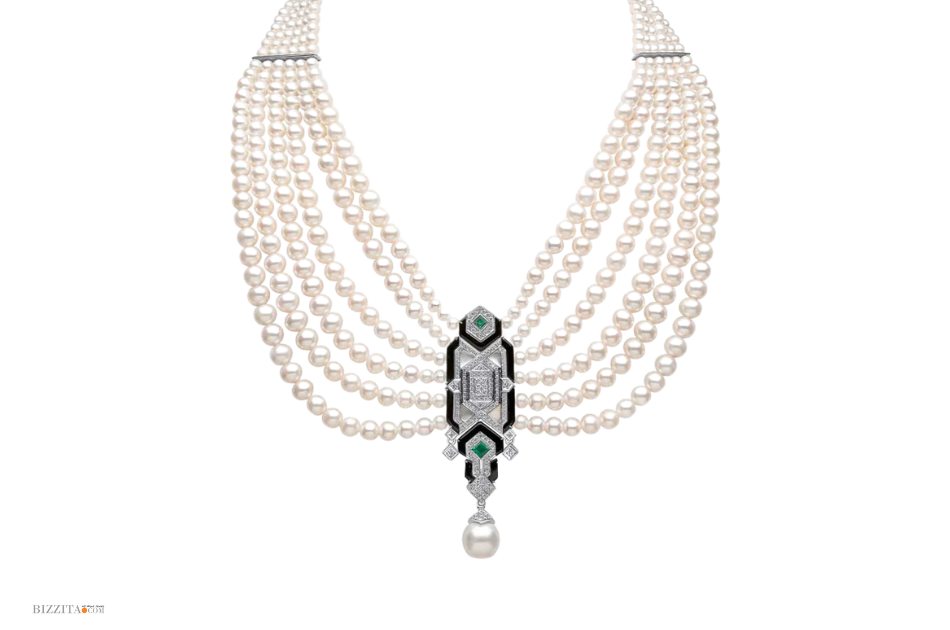
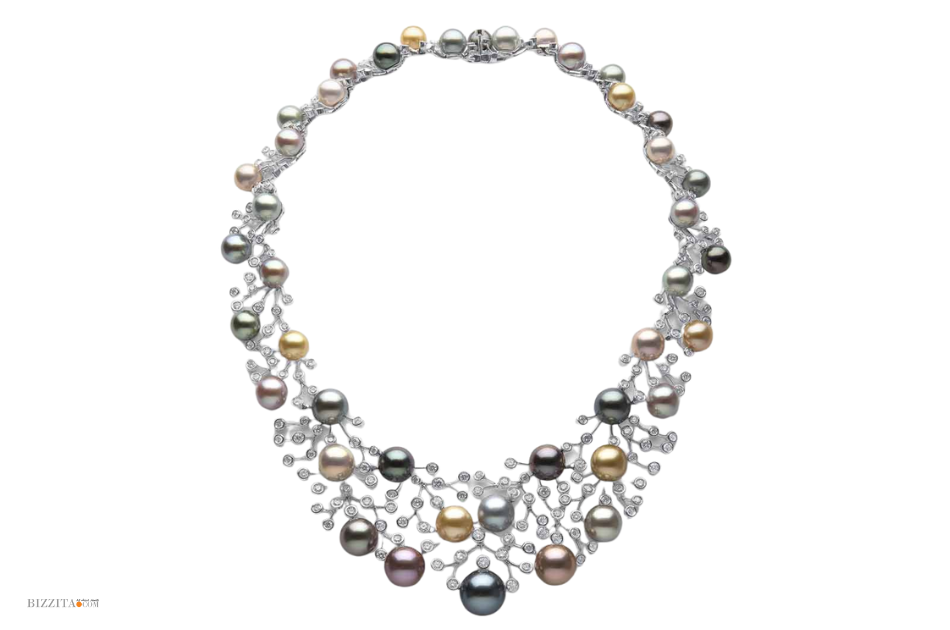
Yoko London
Upper-End Luxury Store (100,000+ EUR/USD Range)
Why to Buy Pearl Jewelry
Pearls are highly sought after in ultra-luxury markets, mainly sourced from iconic brands featuring rare varieties like South Sea or Akoya pearls. Ultra-luxury clients value traditional luxury and modern design, making pearls a fitting addition. This market is drawn to pearls for their refinement, craftsmanship, and exclusivity.
Buying Considerations
- Brands and Artistry: Select top-tier brands such as Mikimoto (for rare Akoya and South Sea pearls), Bibi van der Velden, and Margot McKinney for one-of-a-kind artistic designs that convey both luxury and exclusivity.
- Jewelry Types: Consider custom or high-jewelry pieces featuring larger pearls or unique shapes like Baroque. Offer bespoke services, allowing clients to craft personalized pieces. Also, consider natural pearls, which are so understated chic that only insiders will understand.
- Educational Storytelling: Highlight the craftsmanship and luxury behind each piece. Share the story of pearl origins, from their creation in pristine ocean environments to their cultivation in luxury-oriented farms.
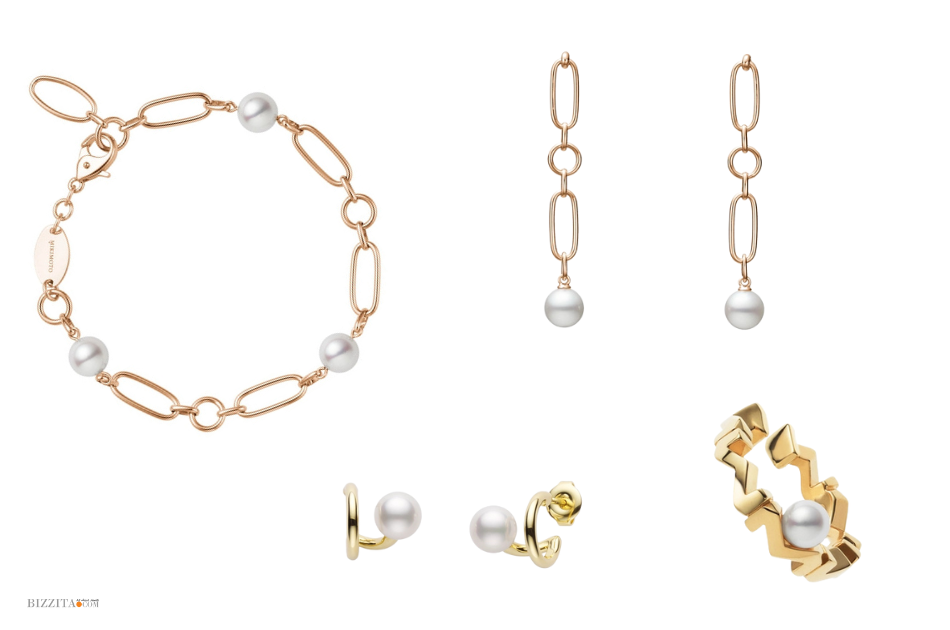
Mikimoto (M-Line)

Mikimoto x Comme des Garçons
Entry-Level and Demi-Fine Jewelry Category
Why to Buy Pearl Jewelry
Pearls can be surprisingly accessible while offering a high-value perception, especially for younger customers or those new to luxury jewelry. Entry-level and demi-fine pearls provide an affordable way to indulge in this trending gemstone. This category appeals to a diverse demographic—those seeking well-made, whimsical pieces and those looking to make a statement without high cost.
Buying Considerations
- Focus on Quality Over “Cheapness”: Position pearls as an affordable luxury rather than “cheap” jewelry. Use brands that offer demi-fine quality, like Mejuri or Mizuki. Also, check out Mikimoto's V-Line and M-Line.
- Playful, Trend-Driven Designs: Offer pearl jewelry with creative designs, such as pearl earcuffs, layered chokers, or dainty baroque pearl rings. These designs appeal to trend-focused clients who enjoy fun and sophistication.
- Educational Approach: Emphasize pearls’ fashion versatility and eco-friendly appeal. Use social media and in-store displays to inform customers about the contemporary allure and sustainable practices associated with pearl farming.
Thank you for your support!
Warmly,
Esther
- Follow me on LinkedIn for daily doses of jewelry and jewelry industry inspiration!
- You can also subscribe to my newsletter on LinkedIn! (we are heading towards 12.000 subscribers!)
Leave a comment
![]()
© 2013 - 2020 Bizzita. All Rights Reserved
Legal Information | Copyright & Privacy Policy | Term & Conditions

